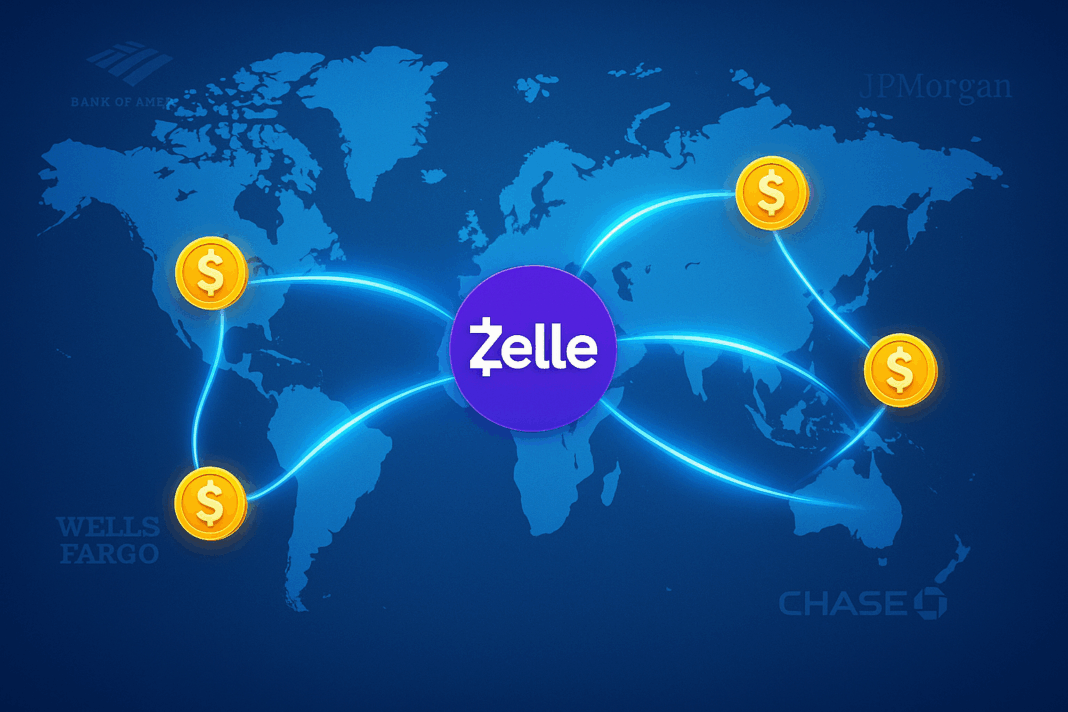Zelle’s Ambitious Global Play
Riding the Stablecoin Wave
Zelle’s planned integration of stablecoins represents a bold step towards streamlining international money transfers. For years, the platform has been a mainstay of US banking apps, facilitating instant domestic transfers. Now, Early Warning Services is looking to replicate that speed and reliability on a global scale, aiming for transactions that are faster, cheaper and more dependable than legacy systems.
“Zelle transformed how Americans send money at home,” stated Early Warning CEO Cameron Fowler. The ambition now is to extend that same level of efficiency to international transfers, focusing on areas where “consumer need, bank capability, and global opportunity intersect.” This initiative is set to be available to all financial institutions within the Zelle Network, which already includes more than 2,500 banks and credit unions.
The Regulatory Tailwind
This expansion arrives at a crucial juncture, bolstered by increasing regulatory clarity in the United States. The passing of the US GENIUS Act earlier this year has established a federal framework for the issuance and oversight of stablecoins. This legislation provides the necessary regulatory scaffolding for Zelle to innovate more rapidly and scale its network across international borders with greater confidence. This legislative environment has encouraged not only Zelle but also other major corporations to explore their own stablecoin initiatives.
As Fowler notes, clearer rules empower Zelle to “innovate more quickly” and focus on scaling its network safely across borders. This newfound regulatory certainty is crucial for attracting institutional investment and fostering wider adoption of blockchain-based payment solutions.
A $360 Billion Market and Growing
The timing of Zelle’s move couldn’t be better. Market data indicates that the total capitalization of stablecoins already stands at a substantial $312 billion and is projected to exceed $360 billion by January 2026. Standard Chartered has even suggested that stablecoins could divert as much as $1 trillion in deposits away from traditional banks in emerging markets within the next three years.
Competitive Landscape and Future Implications
Facing Fintech Competition
Zelle’s decision to enter the cross-border payments arena also reflects the increasingly competitive nature of the global payments market. Fintech companies like PayPal, Revolut, and MoneyGram have already established cross-border offerings that resonate with younger, tech-savvy users. Traditional remittance providers, such as Western Union, are feeling the pressure as new technologies make international transfers faster and more cost-effective. By leveraging stablecoins, Zelle aims to compete directly with these fintech players and capture a share of the rapidly growing cross-border payments market.
Zelle’s Dominance and Trust Factor
While Zelle entered the peer-to-peer payment space later than competitors like Venmo and Cash App, it quickly established itself as a dominant force in the US domestic market. Currently, Zelle processes approximately twice as many daily transactions as Venmo and five times as many as Cash App. This established scale gives Early Warning Services a competitive advantage as it expands its operations globally. Backed by the trust and regulatory credibility of the US banking system, Zelle’s stablecoin-powered model has the potential to gain significant traction in the international market.
Potential Challenges in 2025
Looking ahead to 2025, several challenges may arise for Zelle’s global expansion. The regulatory landscape surrounding stablecoins remains fragmented across different jurisdictions, and navigating these complexities will be crucial for ensuring compliance and fostering adoption. Furthermore, competition from established fintech players and emerging blockchain-based payment solutions is likely to intensify, requiring Zelle to continuously innovate and adapt to changing market conditions. The success of Zelle’s stablecoin initiative will depend on its ability to address these challenges effectively and build a robust, reliable, and secure platform for international payments.
Strategic Considerations
Bank Backing as a Differentiator
Early Warning Services, the parent company of Zelle, is jointly owned by a consortium of major US banks including Bank of America, JPMorgan Chase, Wells Fargo, Capital One, PNC, Truist, and US Bank. This unique ownership structure provides Zelle with several advantages over its competitors. The backing of these established financial institutions lends credibility and stability to the platform, which is particularly important in the highly regulated world of finance. Furthermore, the collective resources and expertise of these banks can be leveraged to develop innovative payment solutions and navigate complex regulatory landscapes.
- Major US banks are backing Zelle’s blockchain-based cross-border network.
- Early Warning Services, jointly owned by Bank of America, JPMorgan Chase, Wells Fargo, Capital One, PNC, Truist, and US Bank, said the initiative will be available to all financial institutions in the Zelle Network.
The Future of Global Payments
Zelle’s entry into the stablecoin-powered cross-border payments market is a significant development that has the potential to reshape the future of global finance. By leveraging blockchain technology and regulatory clarity, Zelle is positioning itself to compete with established fintech players and traditional remittance providers. The success of this initiative will depend on its ability to overcome regulatory hurdles, address competitive pressures, and build a robust, reliable, and secure platform for international payments. If Zelle can successfully navigate these challenges, it has the potential to become a dominant force in the global payments market, offering consumers a faster, cheaper, and more reliable way to send and receive money across borders. It remains to be seen whether this legacy giant can truly embrace the decentralized ethos of crypto, or if this is simply a strategic manoeuvre to retain market share in an increasingly digital world. The coming year will undoubtedly reveal more about Zelle’s long-term commitment to the blockchain revolution.






